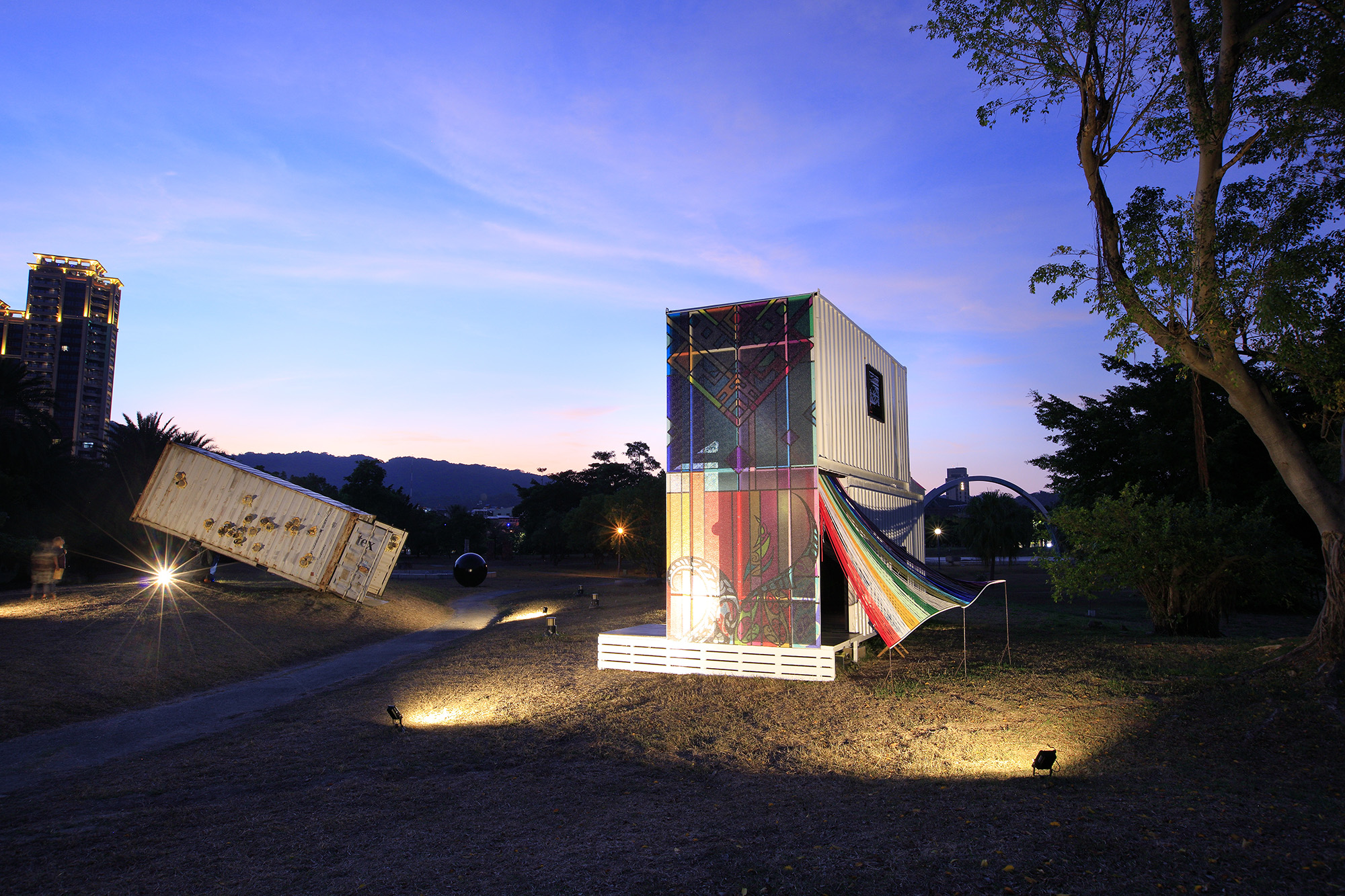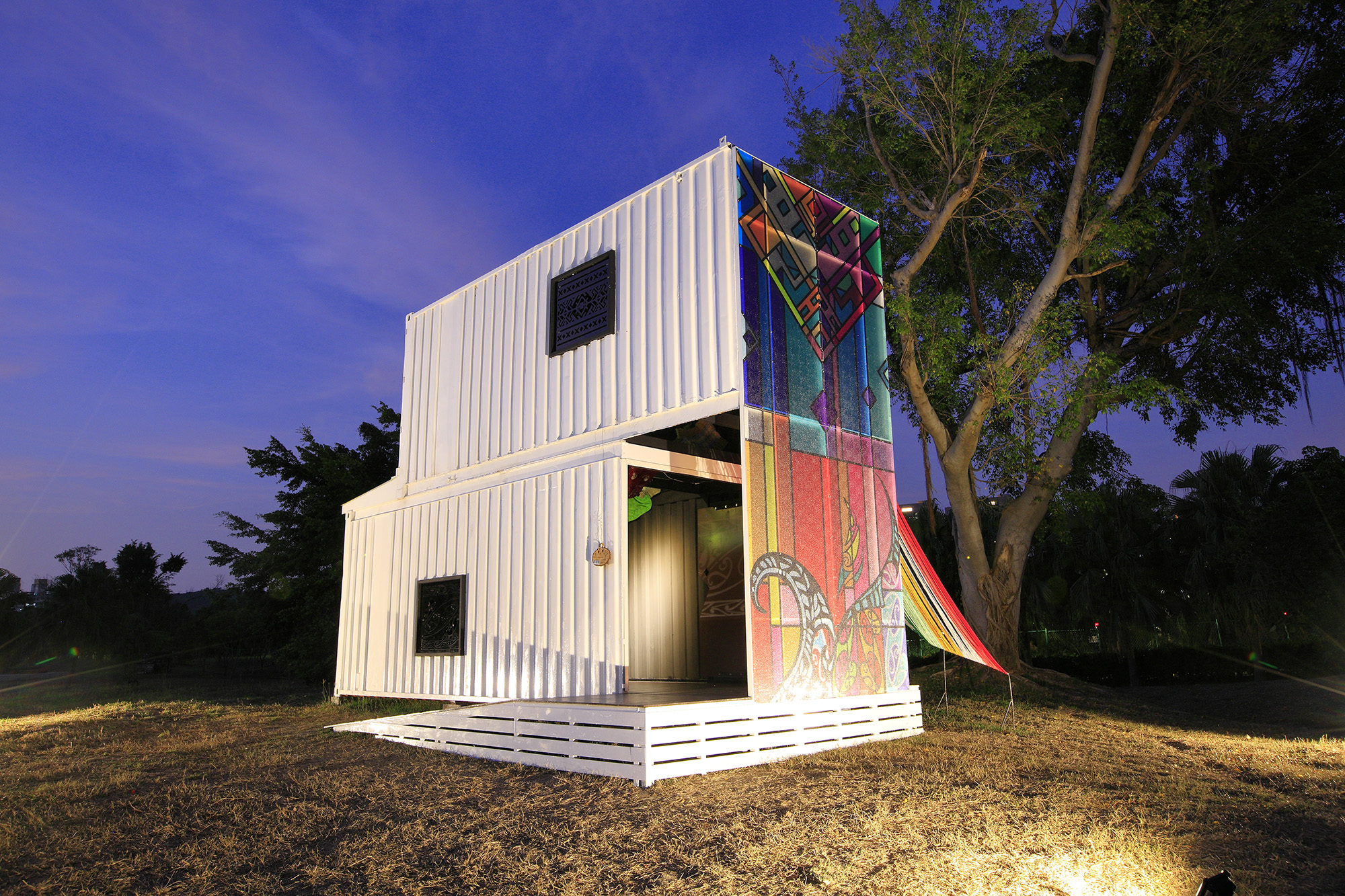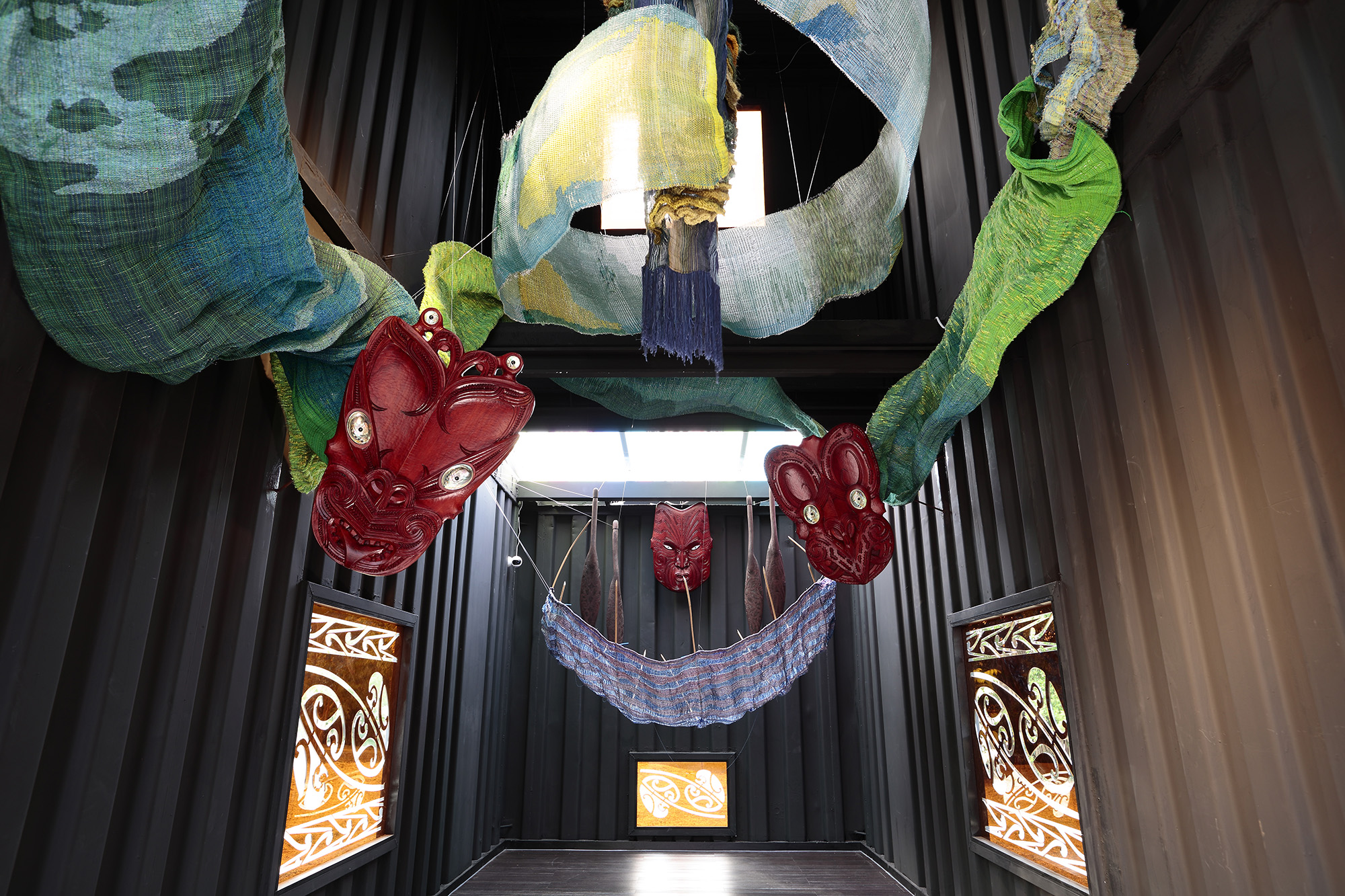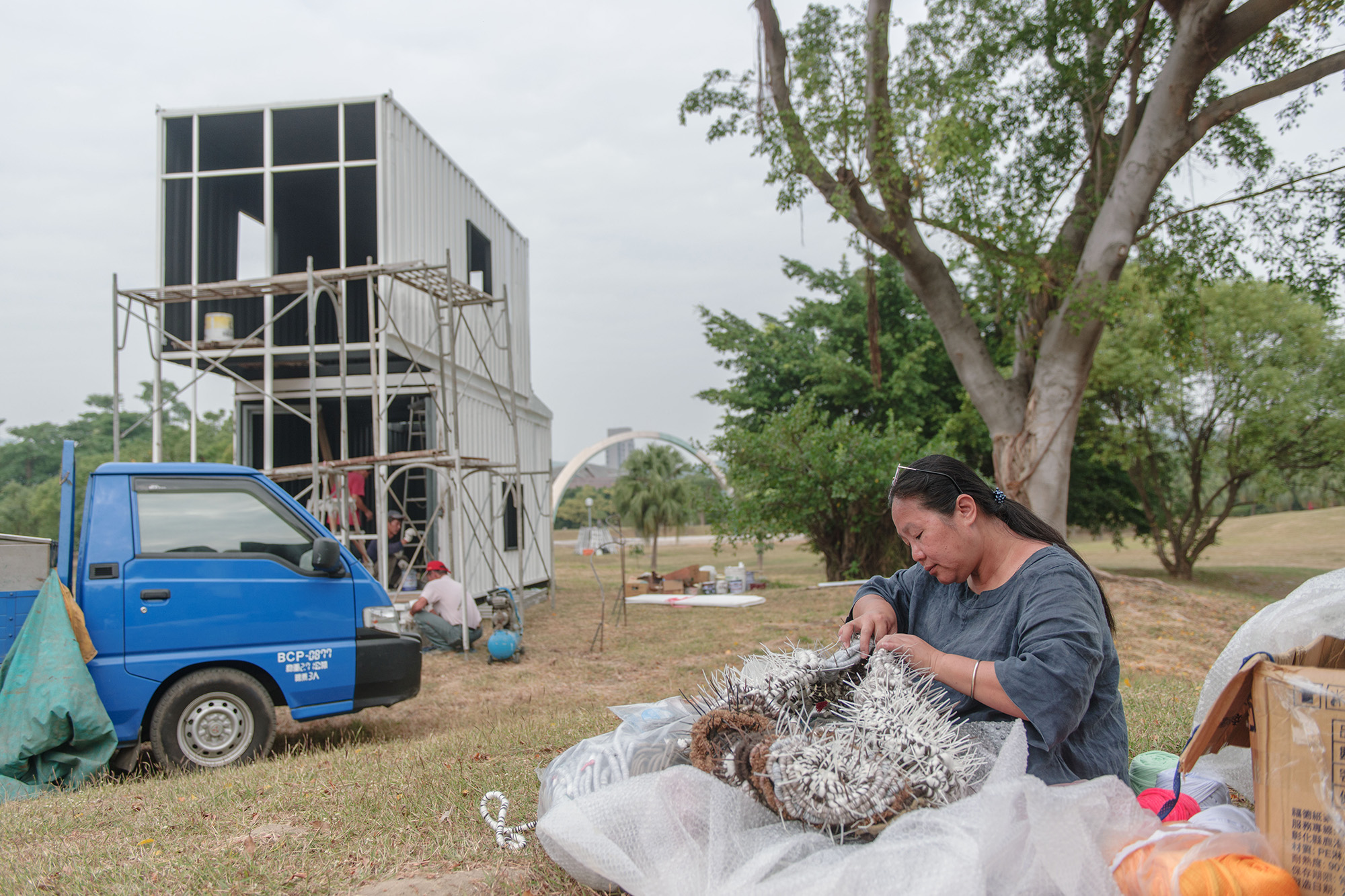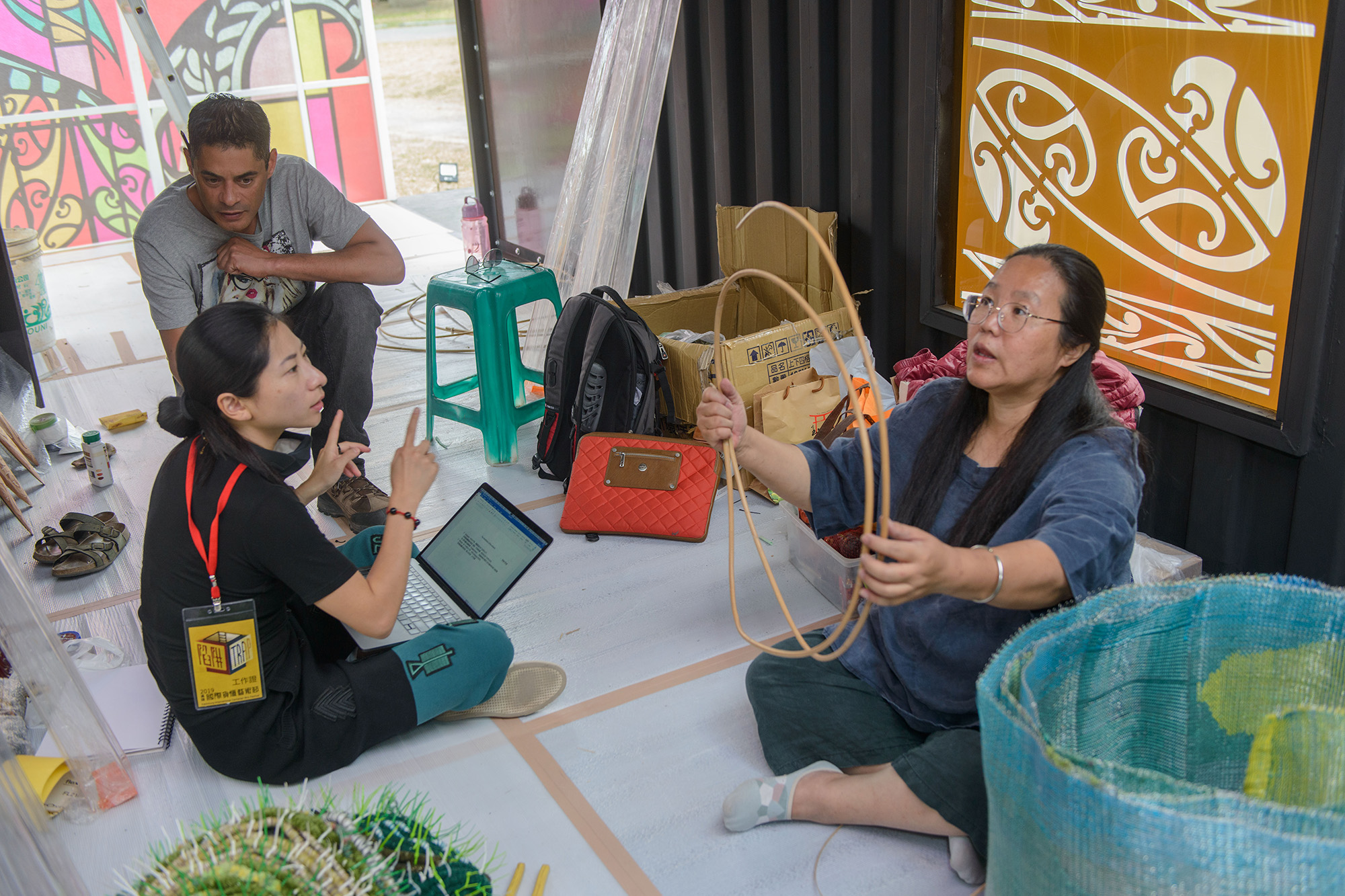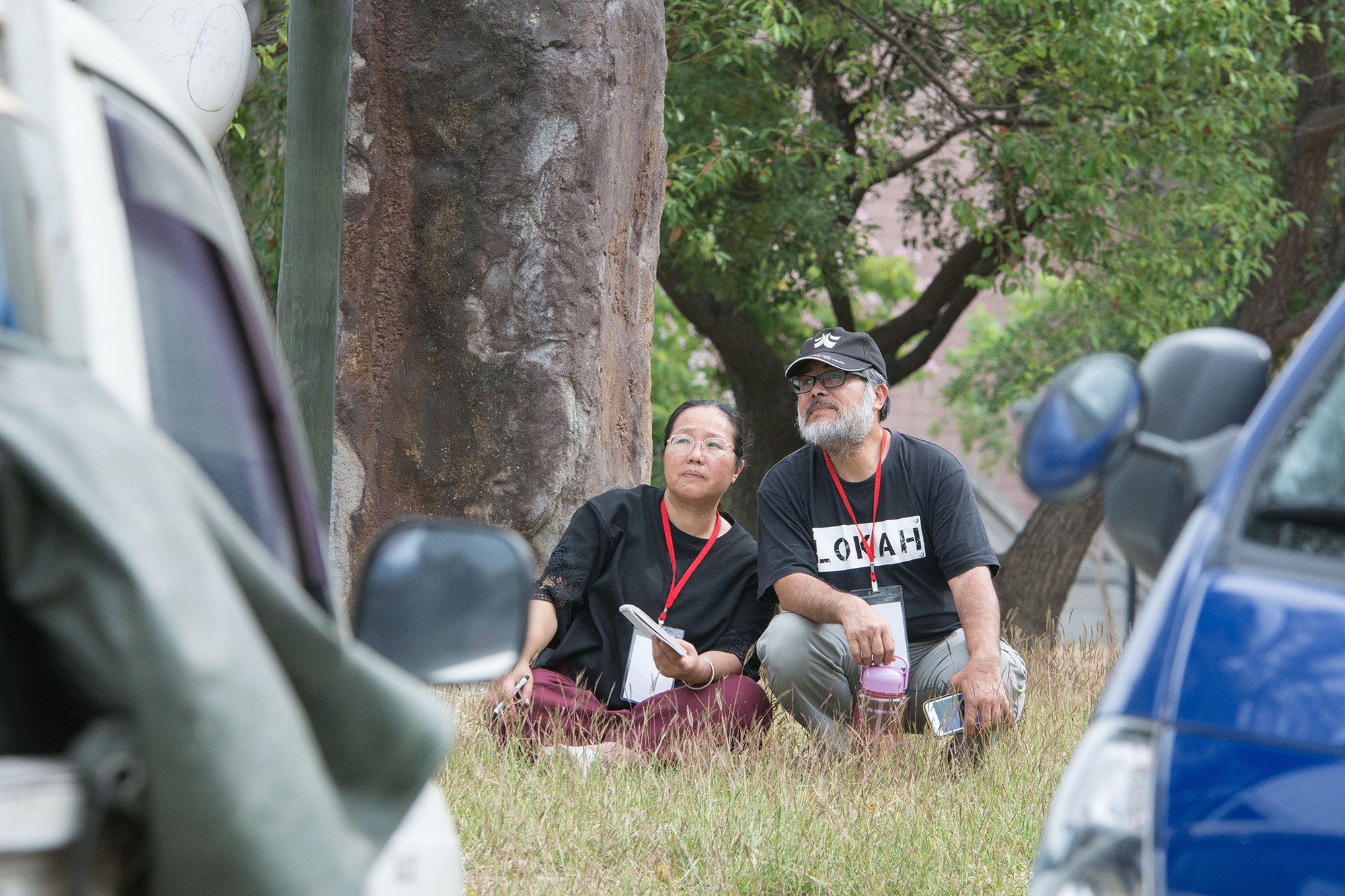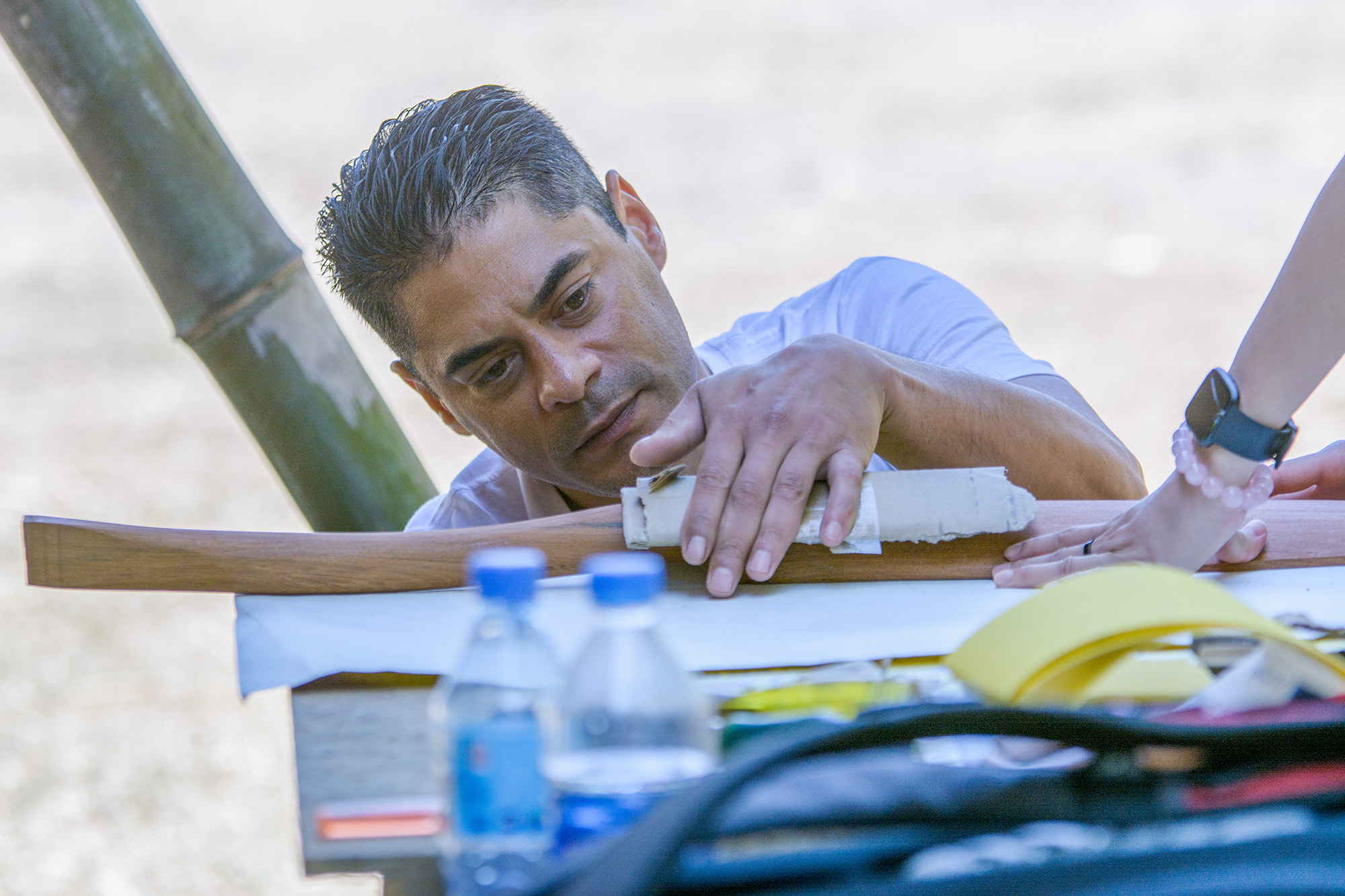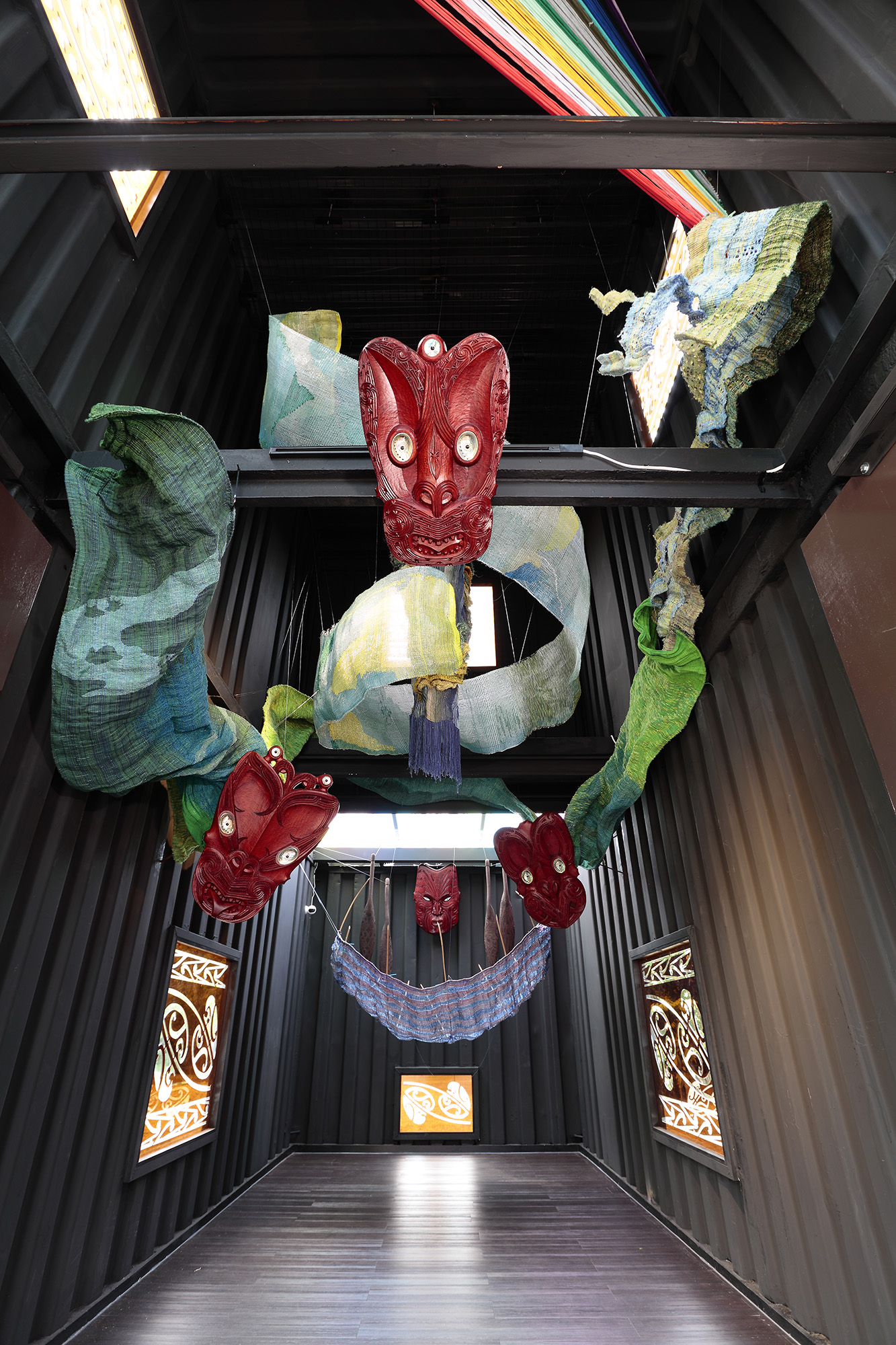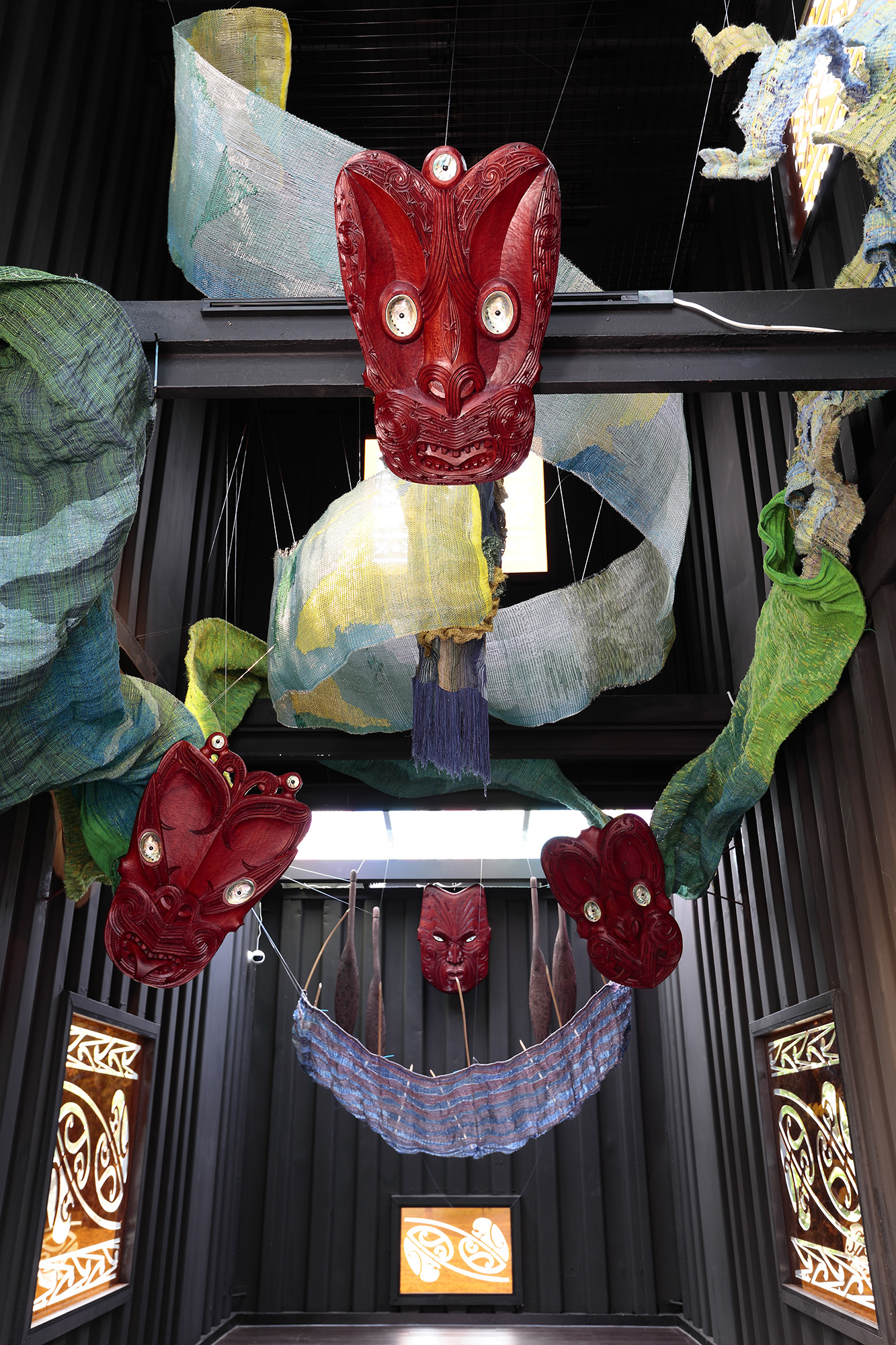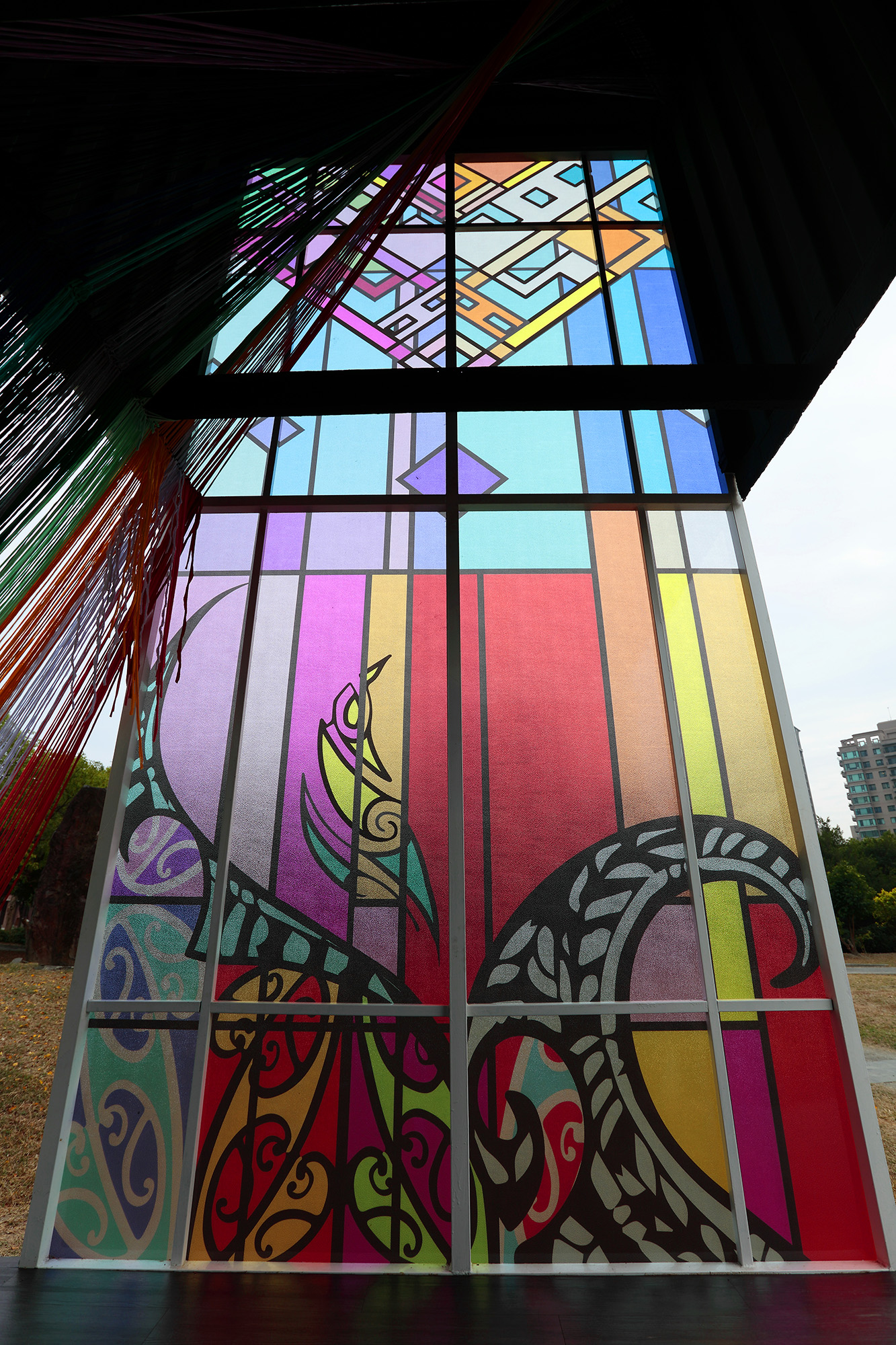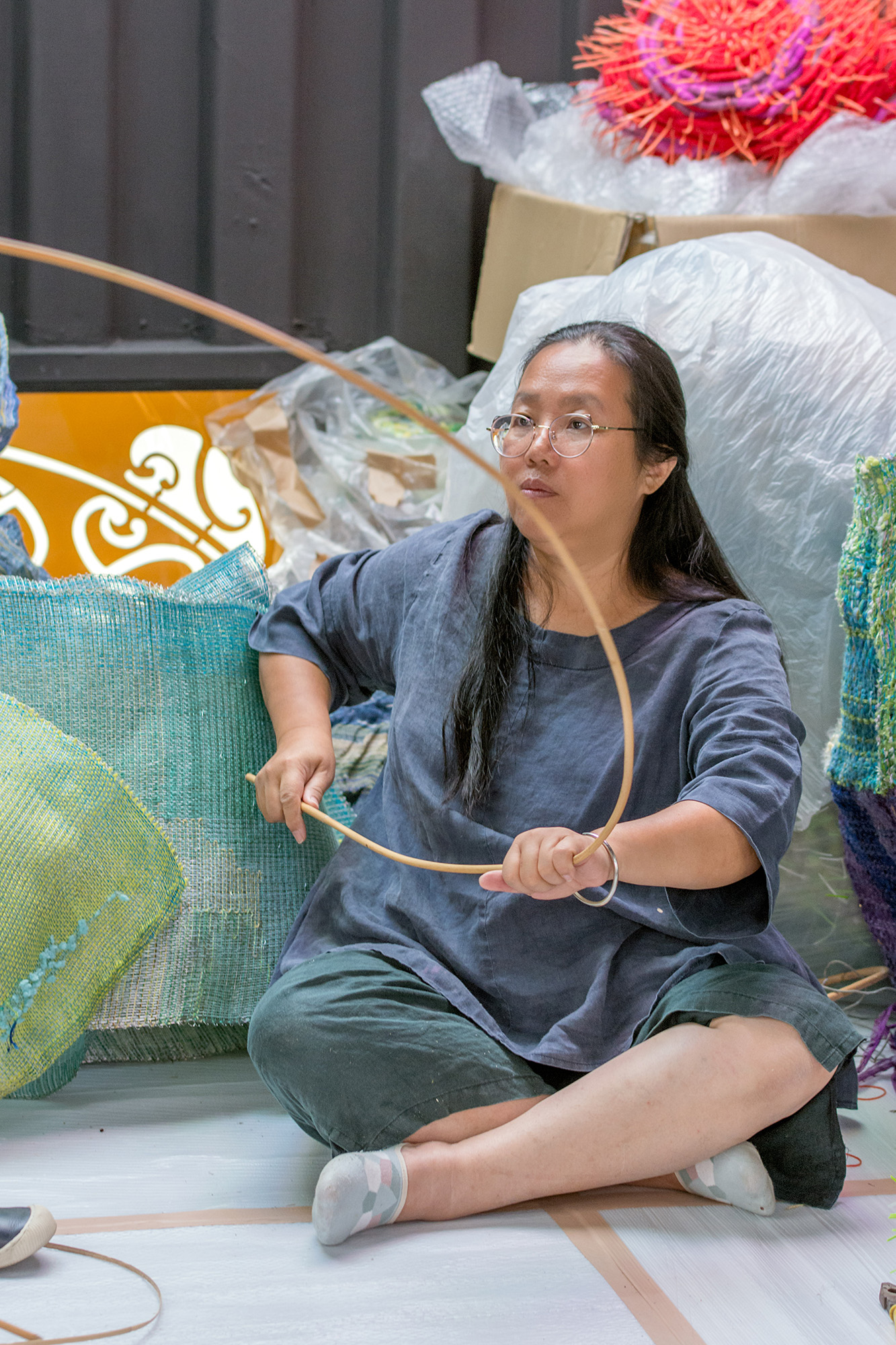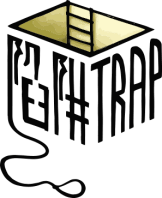
尤瑪 ‧ 達陸
尤瑪 ‧ 達陸,泰雅族人,2016年由文化部頒發重要傳統藝術暨文化資產保存技術保存者認證。
從台灣原住民族泰雅族傳統織品的研究及創作出發專研傳統與當代各種線性材質,進行以傳統文化為基底的藝術創作。以30年的時間穿梭在泰雅百個部落作田野調查;到國外的博物館進行原住民傳統服飾織物的調查分析工作,尋回失傳的技藝與記憶,進行系統分類與傳承紀錄。從推廣民族傳統的纖維栽植及織作的復振、博物館織品的分析研究、重製,連結民族教育的發展,戮力當代纖維藝術的創作,為台灣原住民染織工藝與藝術種下深遠的希望。
作品名稱
線・阱 (線性時間的陷阱)
Trap of Linear Time
Yuma Taru
Yuma Taru, an Atayal artist. In 2016, she was given the title by the Ministry of Culture as one of the preservers of important heritage of traditional arts and cultures in Taiwan.Her art is based on traditional indigenous cultures, starting from her research of traditional Atayal textiles with a focus on the characteristics of threads made of traditional and contemporary materials.
She spent 30 years conducting field trips to over 100 Atayal villages. She also went to museums abroad to study traditional indigenous attires, trying to revive already lost handicraft techniques and memories. She attempts to continue and pass down the indigenous tradition by systematically categorizing her research findings; promoting the growing of fiber plants used for indigenous textile production; reviving the art of traditional indigenous textiles; and studying and reproducing the textiles in museums. She is dedicated to combining education of indigenous peoples and contemporary fiber art, planting the seeds of future hopes for the indigenous dyeing and weaving art in Taiwan.

